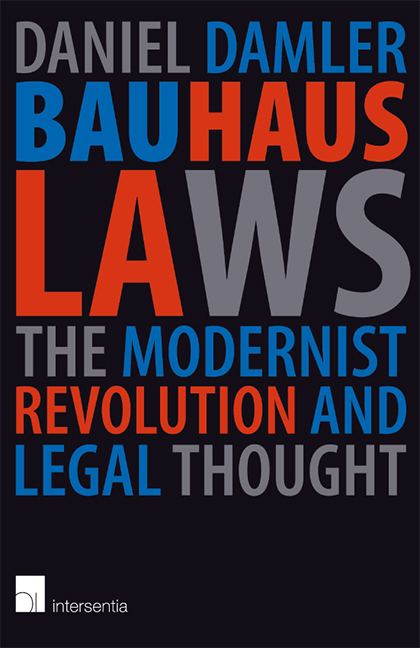Book contents
- Frontmatter
- Acknowledgements
- Contents
- Platonic Modernism: Introduction
- 1 Vienna 1900: Pure Legal Craftwork
- 2 Utopias Built with New Forms and Materials: Taut, Zamyatin, Le Corbusier
- 3 Hijacking Modernism: Bauhaus Values in the Third Reich
- 4 One-World Beauty: International Law and International Style
- 5 Regaining Sovereignty: “Transparency” in Postwar Germany
- Kandinsky's Laws: Epilogue
- About the Author
5 - Regaining Sovereignty: “Transparency” in Postwar Germany
Published online by Cambridge University Press: 15 November 2019
- Frontmatter
- Acknowledgements
- Contents
- Platonic Modernism: Introduction
- 1 Vienna 1900: Pure Legal Craftwork
- 2 Utopias Built with New Forms and Materials: Taut, Zamyatin, Le Corbusier
- 3 Hijacking Modernism: Bauhaus Values in the Third Reich
- 4 One-World Beauty: International Law and International Style
- 5 Regaining Sovereignty: “Transparency” in Postwar Germany
- Kandinsky's Laws: Epilogue
- About the Author
Summary
There is scarcely a (legal) policy issue in the early twenty-first century that enjoys such broad support, across the political spectrum, as the demand for “transparency.” This material quality, understood as the guiding principle of a democratically constituted community, is valued just as highly nowadays as the noble ideals of the French Revolution: liberté, égalité, fraternité . “Transparency,” wrote Christopher Hood not long ago, “ is a term that has attained quasi-religious significance in debate over governance and institutional design. Since the 1980's the word has appeared in the litanies of countless institutional-reform documents and mission statements.”
However topical and legitimate the demand for transparency may seem, lending it substance is quite another matter. In fact, there are a range of heterogeneous reform initiatives lurking behind the concept. A key component of these is the push to grant easier access to information – information that has previously been the exclusive reserve of the state, large corporations, international organizations, etc. To legal scholars, furthermore, transparency means intelligibility. General terms and conditions are ultimately not effective if they prove to be “lacking in transparency,” in part or fully. Third, there is the demand for “structural transparency.” The question in this case is how clear and well-structured the institutional framework of a community or company has to be in order to fulfill its purpose.
The remarkable variety of political and legal acceptations associated with the word “transparency” would suggest that the only common denominator is the metaphorical concept of “visibility,” whose popularity, in turn, favored certain content, namely the content compatible with this metaphor. If this is so, there must be a reason why, in the twentieth century, the sensory phenomenon of “visibility” played such a prominent role. In order to answer this question, it is necessary, first of all, to explain when and under which circumstances the topos of the visible entered the legal and political discourse.
It is impossible, of course, to sift through and evaluate all of the pertinent written documents, but modern databases and library catalogs do at least allow us an initial overview, enabling us to delimit – naturally with a grain of salt – the occurrence and spread of the term “transparency.”
- Type
- Chapter
- Information
- Bauhaus LawsThe Modernist Revolution and Legal Thought, pp. 159 - 184Publisher: IntersentiaPrint publication year: 2019



